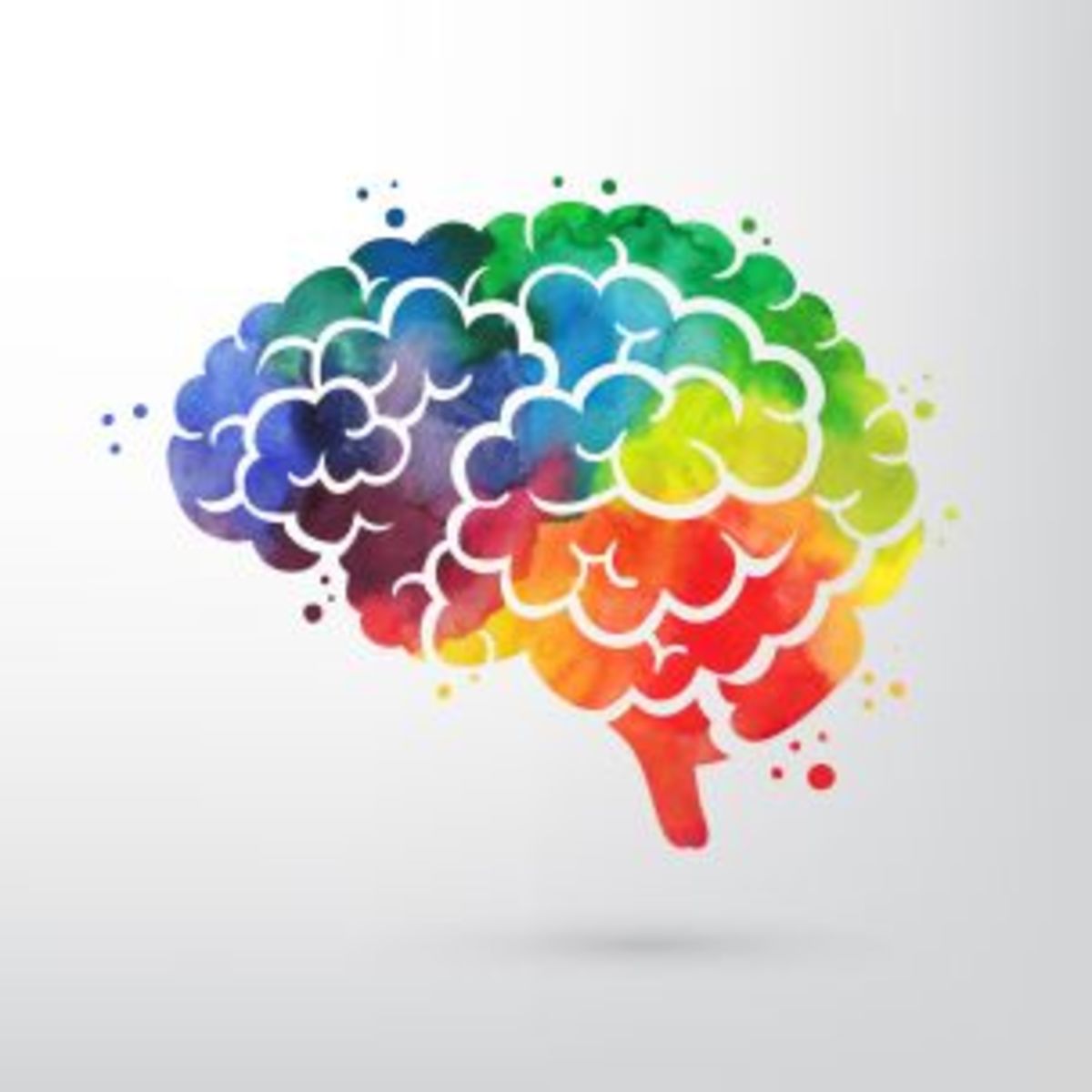The Psychology of Authenticity: Why Being Yourself Is Hard—and Necessary

Introduction: The Risk and Reward of Being Real
Let’s be real—being yourself isn’t always simple. We hear phrases like “just be authentic” tossed around like it’s a switch you can flip. But in real life? It often feels more like a balancing act—tiptoeing between expressing who you are and trying not to lose your place in the world around you.
Especially now, when every word, every feeling, every moment seems to be under a microscope. With cancel culture and the constant hum of online judgment, many of us feel this quiet pressure to say the “right” thing, feel the “right” way, or at least appear to be on the “right” side of things. And underneath it all, there’s a growing fear: What if I’m misunderstood? What if I mess up? What if being honest costs me connection?
Cancel culture began with good intentions—to hold people accountable. But somewhere along the way, it’s sometimes turned into public shaming, leaving little space for nuance, growth, or grace. And when that happens, people start to shrink. They edit themselves. They tuck away their quirks, their questions, their truths. Not because they don’t care—but because they’re scared.
I’ve felt it. I’ve seen it in friendships, in workspaces, and in those quiet, late-night conversations we have with ourselves. We smile when we’re supposed to. We nod, we laugh, we play along. But inside, there’s often a quiet ache—a longing to be known, not just liked. To be accepted, not just tolerated. To be real, even if it’s messy.
The irony? The more we try to fit in, the more we lose touch with ourselves. And that disconnection—it doesn’t just make us lonely. It chips away at our joy, our clarity, our sense of who we are.
This piece is a gentle invitation to explore what authenticity really means. Why it matters. Why it’s so hard. And how wearing a mask—no matter how well it fits—can slowly unravel our relationships and our happiness. We’ll talk about the fears that keep us hiding, the emotional toll of pretending, and the radical healing that comes from reclaiming your truth.
But first, let’s pause. Take a breath. And ask yourself—honestly, tenderly: Are the beliefs I hold, the choices I make, and the way I show up in the world truly mine? Or are they shaped by who I think I need to be to belong?

What Does It Mean to Be Authentic?
Being authentic sounds simple, doesn’t it? Just be yourself. But in practice, it’s anything but easy. To live authentically means aligning with your inner truth—not the version of you shaped by fear, performance, or the need for approval. It’s about letting your thoughts, feelings, and actions reflect who you really are, even when that truth feels tender or inconvenient. It also calls for you to be accountable for yourself without falling back on blaming something or someone else for your actions.
Authenticity isn’t a fixed trait—it’s a journey. A lifelong unfolding. And two of the most soulful thinkers in psychology, Carl Jung and Alfred Adler, offered powerful maps for that journey.
Carl Jung: The Call to Wholeness
Jung believed that becoming your true self—what he called individuation—was a sacred task. It’s the process of weaving together all the parts of your psyche: the conscious and the unconscious, the light and the shadow, the feminine and masculine within, and ultimately, the Self—the deepest, most integrated version of you.
He wrote, “What is it, in the end, that induces a man to go his own way…? It is what is commonly called vocation: an irrational factor that destines a man to emancipate himself from the herd…”
In other words, authenticity isn’t just about honesty—it’s about answering a mysterious inner calling. Jung saw this as both spiritual and psychological. When we ignore it, we feel lost. When we follow it, we begin to feel whole.
But here’s the catch: many of us fear what we’ll find in the shadow. The parts we’ve hidden, denied, or been told are “too much.” Jung believed that facing those parts—gently, bravely—is essential. Only by embracing our full selves, messy bits and all, can we truly live from a place of authenticity.
Alfred Adler: The Courage to Be Imperfect
Adler took a different route. He saw authenticity as deeply tied to our need for connection and belonging. His idea of the inferiority complex explains how early feelings of inadequacy can lead us to overcompensate, perform, or hide who we really are.
He believed that healing comes not from perfection, but from social interest—our ability to show up in community, contribute meaningfully, and accept ourselves as we are. Adler taught that authenticity requires the courage to be imperfect. To stop chasing approval and start embracing our humanity.
When we do that, we stop performing. We start relating. And we open the door to deeper, more nourishing relationships.
Why This Matters
Jung and Adler, in their own ways, remind us that authenticity isn’t just about self-expression—it’s about self-discovery, self-acceptance, and meaningful engagement with the world.
When we suppress our truth—out of fear, shame, or pressure—we often feel:
-
Disconnected from ourselves
-
Lonely, even in a crowd
-
Anxious, uncertain, or emotionally numb
-
Struggling to form lasting, honest relationships
But when we begin to honor who we are—even imperfectly—we start to feel more alive. More grounded. More connected. We stop performing and start belonging.
So maybe the real question isn’t “How do I become authentic?” but “Am I willing to meet myself where I am—and let that be enough?”

When Do You Feel Least Like Yourself
We all wear masks sometimes—but when do you feel furthest from your true self?
The Cost of Inauthenticity in Relationships
Inauthenticity in relationships doesn’t always show up as betrayal or big dramatic lies. More often, it’s quiet. It’s the half-truths we tell to keep the peace. The polite smile that doesn’t quite reach the eyes. The “I’m fine” that hides a storm brewing underneath. It’s the performance of closeness without the rawness that makes closeness real.
Most of us don’t wake up and decide to be inauthentic. It’s usually fear that drives it—fear of being rejected, misunderstood, abandoned, or judged. Somewhere along the way, many of us learned that being fully ourselves wasn’t safe. So we adapted. We became who we thought our partner wanted. We tucked away our needs, swallowed our feelings, and shape-shifted to preserve harmony. But over time, that kind of self-erasure creates distance. It breeds resentment. And it leaves us feeling deeply alone—even when we’re not.
What’s Happening Beneath the Surface
Relational psychologists describe authenticity as the ability to be open, honest, and emotionally congruent with another person. When that’s missing, we often slip into what’s called the “false self”—a version of us crafted to meet expectations, while the real self stays hidden in the wings.
Dr. Sue Johnson, who developed Emotionally Focused Therapy, says that most arguments in relationships aren’t really about the dishes or the schedule—they’re protests against emotional disconnection. Beneath the tension, partners are asking: Do you see me? Do I matter to you? Will you show up when I need you? But when we’re not being real, those questions go unanswered. And both people end up feeling unseen.
How Inauthenticity Shows Up
-
Saying yes when you mean no
-
Smiling through discomfort to avoid conflict
-
Acting cheerful or detached because it’s expected—not because it’s true
-
Holding back your real feelings out of fear they’ll be “too much”
-
Putting your partner’s needs first while quietly neglecting your own
-
Feeling like your partner doesn’t really know you—even after years together
The Emotional Cost
When we can’t be ourselves in a relationship, it takes a toll:
-
Loneliness: You’re with someone, but you feel invisible
-
Resentment: Suppressed needs don’t disappear—they simmer
-
Anxiety: Constantly monitoring yourself to avoid disapproval
-
Identity confusion: Losing touch with who you are outside the relationship
-
Low intimacy: Without emotional honesty, closeness fades
As therapist Anna Aslanian puts it, “Authenticity in relationships isn’t possible in an environment full of contempt, shame, or betrayal.” When emotional safety is missing, we armor up. And that armor, while protective, keeps connection out.
Reclaiming Realness—Together
Authenticity doesn’t mean spilling every thought or being vulnerable 24/7. It means creating a space where both people feel safe enough to be real. It looks like:
-
Naming your needs without guilt
-
Sharing your fears without shame
-
Listening with empathy instead of defensiveness
-
Validating each other’s truths—even when they’re different
Attachment theorist John Bowlby believed that secure relationships give us the courage to take emotional risks. When we feel safe, we can be authentic. And when we’re authentic, we can finally feel connected—not just in proximity, but in soul.

Why Are People Afraid to Be Themselves?
At its heart, the fear of authenticity is really a fear of being seen. Not the polished, curated version—but the real you. The one with quirks, contradictions, soft spots, and shadows. And let’s be honest—that kind of exposure can feel terrifying.
Psychologists have explored this for decades, and while each person’s story is unique, there are some common threads that help explain why so many of us reach for masks instead of mirrors.
Why We Hide: The Deep Roots of Belonging
We’re wired for connection. Back in early tribal days, being cast out wasn’t just painful—it was dangerous. That primal fear still hums beneath the surface today. Social psychology tells us that the need to belong is so strong, we’ll often silence our truth just to keep the peace. Especially in places where fitting in is rewarded—workplaces, families, online spaces. We learn to blend, to soften, to disappear a little.
Childhood Echoes: Shame and Self-Erasure
For many, the fear of being authentic starts early. If you were shamed, ignored, or punished for expressing certain feelings or traits, you likely learned to tuck those parts away. Alfred Adler believed that early feelings of inferiority can lead us to overcompensate—chasing perfection, approval, or control. We become performers, not because we’re fake, but because we’re afraid.
Jung’s Shadow: Meeting What We’ve Buried
Carl Jung introduced the idea of the shadow self—the parts of us we reject or deny. Anger, vulnerability, sexuality, creativity… all the things we’ve been told are “too much” or “not enough.” Jung believed that to live authentically, we must face these hidden aspects. But that’s no small task. It’s like standing naked in front of a mirror—raw, exposed, and unsure. It takes courage. It takes compassion. And it takes a deep willingness to embrace imperfection.
Modern Pressures: Comparison and Censorship
In today’s world, the fear of being real is amplified. Social media thrives on curated identities. Cancel culture, while born from a desire for accountability, can sometimes create a climate of fear. People worry that being honest, nuanced, or different might lead to backlash. So we self-censor. We suppress. And slowly, we lose the thread of genuine connection.
What It Costs Us
When we hide who we are, the emotional toll is real:
-
Loneliness: You’re surrounded, but still feel invisible
-
Anxiety: Always watching yourself, afraid to slip
-
Depression: A quiet emptiness, a loss of self
-
Identity confusion: Not knowing what’s real anymore
Brené Brown calls this “the armor of self-protection.” We wear it to feel safe—but it also keeps out intimacy, joy, and meaning.
The Way Back to Yourself
Here’s the good news: authenticity isn’t something you either have or don’t. It’s a skill. A practice. A slow, tender unfolding.
It begins with self-awareness—learning to notice when you’re performing versus when you’re aligned. It grows through vulnerability, healthy boundaries, and self-compassion. And it blossoms in relationships where you’re allowed to be imperfect and still loved.
As Jung said, “The privilege of a lifetime is to become who you truly are.” And that privilege? It’s waiting for you. Not in perfection, but in presence.

How to Cultivate Authenticity
Authenticity isn’t something you’re born with and either have or don’t—it’s something you practice. Daily. Tenderly. It’s the quiet decision to live in alignment with your values, your emotions, and your truth—even when it’s uncomfortable. Even when approval feels easier.
It asks for self-awareness, vulnerability, and the kind of courage that whispers, “I choose integrity over fitting in.” Below are five soulful ways to cultivate authenticity, each paired with real-life moments that bring the idea down to earth.
1. Practice Self-Reflection
What it really means: Slow down. Listen inward. Notice your thoughts and feelings without rushing to fix or judge them.
Real-life moment: You get invited to a networking event. Everyone says it’s a “great opportunity,” but something in you hesitates. Instead of saying yes out of obligation, you pause and ask yourself: Am I going because I want to connect—or because I feel I should? You journal, realize you’re craving solitude, and choose to stay home. That’s you honoring your truth.
Ways to try it:
-
Keep a journal to track what lights you up—and what drains you.
-
Ask: Is this choice coming from alignment or fear?
-
Take quiet walks or meditate to hear your inner voice more clearly.
2. Embrace Vulnerability
What it really means: Let yourself be seen—even when it feels raw or imperfect.
Real-life moment: A friend asks how you’ve been. You almost say “I’m fine,” but instead you say, “Honestly, I’ve been feeling a little disconnected lately. I’m not sure why, but I wanted to say it out loud.” That moment deepens your bond and opens space for real connection.
Ways to try it:
-
Start small: share a feeling or story with someone safe.
-
Remind yourself: vulnerability isn’t weakness—it’s how intimacy begins.
-
Accept that not everyone will respond perfectly—and that’s okay.
3. Set Boundaries
What it really means: Say no when something doesn’t feel true. Say yes when it does.
Real-life moment: A coworker asks you to take on a project that doesn’t align with your creative goals. You feel the pull to say yes out of guilt. But instead, you say, “I appreciate the offer, but I’m focusing on projects that align with my long-term vision right now.” You feel nervous—but also free.
Ways to try it:
-
Get clear on your non-negotiables: time, energy, values.
-
Practice saying no with kindness and clarity.
-
Notice how your body responds when you honor your boundaries—it often feels like relief.
4. Examine Your Conditioning
What it really means: Question the beliefs you inherited. Not all of them still serve you.
Real-life moment: You’ve always believed that expressing anger is “bad.” But lately, resentment keeps bubbling up. You pause, reflect, and realize that belief came from childhood. You begin expressing anger in healthy ways—through assertive conversations or creative outlets. And it feels like reclaiming a part of yourself.
Ways to try it:
-
Ask: Whose voice is this—mine, or someone else’s?
-
Revisit old memories and gently challenge the stories you absorbed.
-
Replace outdated beliefs with ones that reflect who you are now.
5. Honor Your Desires
What it really means: Let yourself want what you want—even if it’s unconventional.
Real-life moment: You’ve always adored whimsical interior design, but you’ve held back, worried it’s “too much.” One day, you create a mood board filled with fairytale textures and zodiac symbols. You feel alive. You realize: This is me. And you begin to share it with the world.
Ways to try it:
-
Make space for play, curiosity, and exploration.
-
Follow what delights you—it’s often a breadcrumb trail to your true self.
-
Let your desires shape your art, your branding, your relationships.
Authenticity isn’t about being perfect—it’s about being present. It’s about showing up as you are, even when it’s messy. Even when it’s scary. And the more you practice, the more you’ll find that your truth isn’t just enough—it’s magnetic.

Final Thoughts
Authenticity isn’t a destination—it’s a daily practice of remembering who you are beneath the noise. It’s the quiet courage to show up as yourself, even when the world tempts you to perform, please, or disappear. And while the path may feel vulnerable, it’s also the most direct route to connection, clarity, and joy.
As Carl Jung said, “The privilege of a lifetime is to become who you truly are.” But becoming yourself requires more than intention—it requires inquiry. Below are thought-provoking questions designed to help you gently peel back the layers and reconnect with your truth.
Meaningful Questions for Self-Reflection
These aren’t checklist questions. They’re invitations. You might journal them, meditate on them, or simply let them echo in your heart as you move through your day.
Identity & Alignment
-
What parts of myself do I hide from others—and why?
-
When do I feel most like “me”? What am I doing, and who am I with?
-
What values do I live by—and which ones do I compromise?
-
If I stripped away all roles and expectations, who would remain?
Expression & Vulnerability
-
What truths am I afraid to speak aloud?
-
What emotions do I suppress to keep others comfortable?
-
Who in my life truly sees me—and how do I show up differently around them?
-
What would I say or do if I knew I wouldn’t be judged?
Desire & Resistance
-
What do I secretly long for, even if it feels “unrealistic”?
-
What dreams have I abandoned to fit in or feel safe?
-
What activities make me lose track of time and forget to check my phone?
-
What’s one thing I’ve been holding back from doing, saying, or creating?
Shadow & Healing
-
What parts of myself do I label as “too much” or “not enough”?
-
What early messages taught me that being myself wasn’t safe?
-
What would it feel like to forgive myself for hiding?
-
What small act could I take today to honor my truth?
A Gentle Invitation
You don’t have to answer all these questions at once. You don’t have to fix anything. Just begin. Let your answers unfold slowly, like petals opening in moonlight. Let them guide you—not to perfection, but to presence.
Because the world doesn’t need your performance. It needs your presence. Your realness. Your radiant, messy, beautiful truth.

References
Gino, F., & Kouchaki, M. (2020). How authenticity eases social rejection. Psychology Today
Swan, B. (2023). Overcoming fear of rejection: Embracing your true self. Becki Swan Coaching
American Psychological Association. (2020). Feeling authentic serves as a buffer against rejection. APA PsycNet
Jung, C. G. (1981). The Development of Personality (Collected Works Vol. 17). Princeton University Press
Neo-Freudians: Adler, Erikson, Jung, and Horney. Pressbooks Psychology
SpringerLink: Authenticity in Relationships
The Gottman Institute: Authenticity in Relationships
Glossary of PsyWellPath: What Authenticity Really Means
Psychology Today: 20 Ways to Be More Authentic
Satsang House: Cultivating Authenticity Through Daily Practice
This content is accurate and true to the best of the author’s knowledge and is not meant to substitute for formal and individualized advice from a qualified professional.
© 2025 Erin K Stewart








